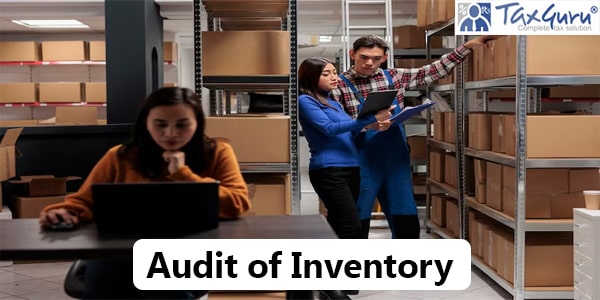Introduction: Inventory management is a critical facet for financial statements in manufacturing and trading enterprises. Governed by AS 2 and IND AS 2, inventory accounting plays a pivotal role. However, the practical nuances of auditing inventory, underpinned by SA 501, demand a closer look. This article delves into the pragmatic aspects of inventory auditing, unraveling key considerations for both trading and manufacturing entities.
Inventory is one of the major financial statement areas for a manufacturing/trading company.
In simple words, inventory is nothing but the goods produced/bought and not yet sold by an entity. It is a current asset in the books of the company. The accounting of inventory is governed by the guidance of AS 2 and IND AS 2. From the audit perspective, audits of inventory are done under the guidance of SA 501 – Audit Evidence – Specific Considerations for Selected Items.
In this article, we shall not go through the theoretical aspects of AS 2 or IND AS 2, but we shall look into the practical aspects of the concept of inventory and in our audit, what points are to be taken care of.
Inventory in a Trading Entity
In case of a trading entity, inventory is quite simple, since there is no complication of valuation or inventory classification. Goods purchased would be recorded under inventory and when it is sold, it is classified as sales. From the valuation aspect as well, there would be only the purchase cost and any incidental cost.
From the audit perspective,
1. We have to check if the management has conducted any physical count of the inventory periodically, as required by the size and nature of the entity. If possible, the audit team can also be a part of the physical count.
2. Obtain the valuation workings where the cost and NRV workings would be available. The cost aspect can be verified by checking the purchase invoices on a sample basis. In the case of NRV, subsequent sales of the product can be checked for.
3. The auditor can also conduct a physical verification of the inventory as on the date.

Inventory in a Manufacturing Entity
Inventory in a manufacturing entity can be complicated. In such entities, inventory is classified as follows,
1. Raw Material
2. Work in Progress
3. Finished Goods
4. Stores & Spares
In the case of stores & spares, the valuation is simple as it would comprise only the cost of purchase and other incidental costs. Even in the case of raw materials, the valuation is done on a similar basis. Hence, during the audit, the same procedures as in the case of a trading entity shall be applied.
However, the complication remains in the case of work in progress (WIP). The valuation of the same would include the following,
1. Direct Materials
2. Direct Labour
3. Direct Overheads
Direct overheads are measured and added to the inventory according to the principles of AS 2 or IND AS 2.
In auditing the WIP, it is to be verified if the valuation is done appropriately including the cost incurred up to that point. Obtaining a cost auditor’s report certifying the valuation would be beneficial. This is more beneficial in recent times where the Assessing Officer under the Income Tax Laws has the power for asking the valuation reports of inventory.
Apart from the valuation, the auditor can also verify the management’s physical inventory count, understand the inventory procedure and the records maintained, and conduct his physical count on a sample basis.
Lastly, in the case of Finished Goods, the valuation is on a cost or NRV, which is a higher basis. The same principles mentioned above can be applied here as well. The auditor only has to ensure that the inventory is appropriately valued and the quantity mentioned in the books, also exists physically.
On paper, auditing of inventory can seem easy. However, in the case of process-oriented entities and large entities, inventory audits can be a bit complicated.
For example, inventory in a hardware trading company would be simple, but in the case of a plywood manufacturing entity, inventory can be complicated because the manufacturing of plywood involves different processes. Similarly, in the case of the casting business, inventory can be a bit complicated.
Conclusion: While inventory auditing may seem straightforward on paper, the complexity deepens in process-oriented and large entities. Varied processes, like those in plywood manufacturing or casting businesses, amplify the intricacy. A comprehensive understanding of AS 2, IND AS 2, and SA 501 is crucial for auditors navigating the challenges posed by inventory audits in diverse business landscapes.




